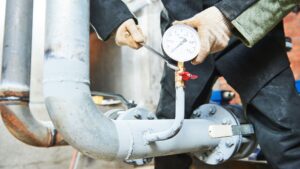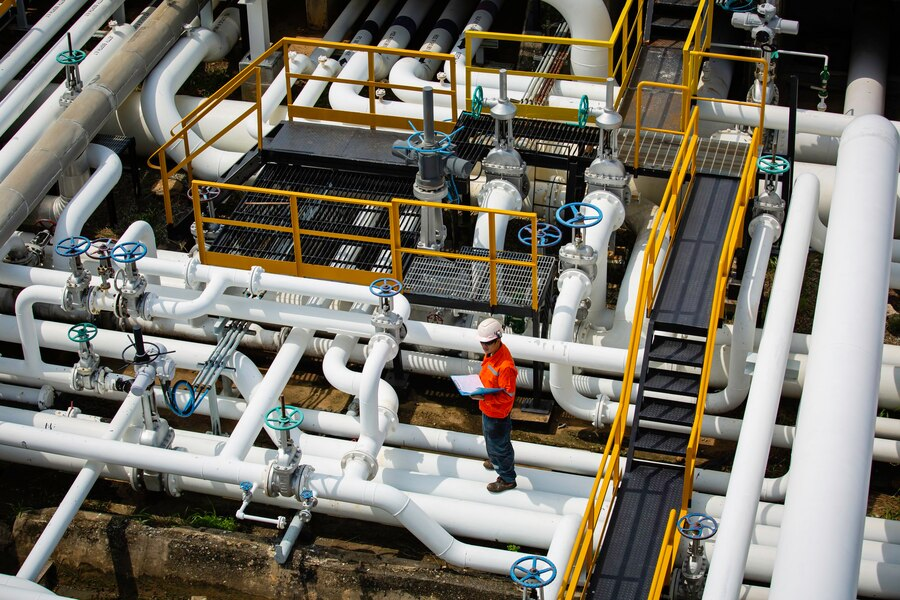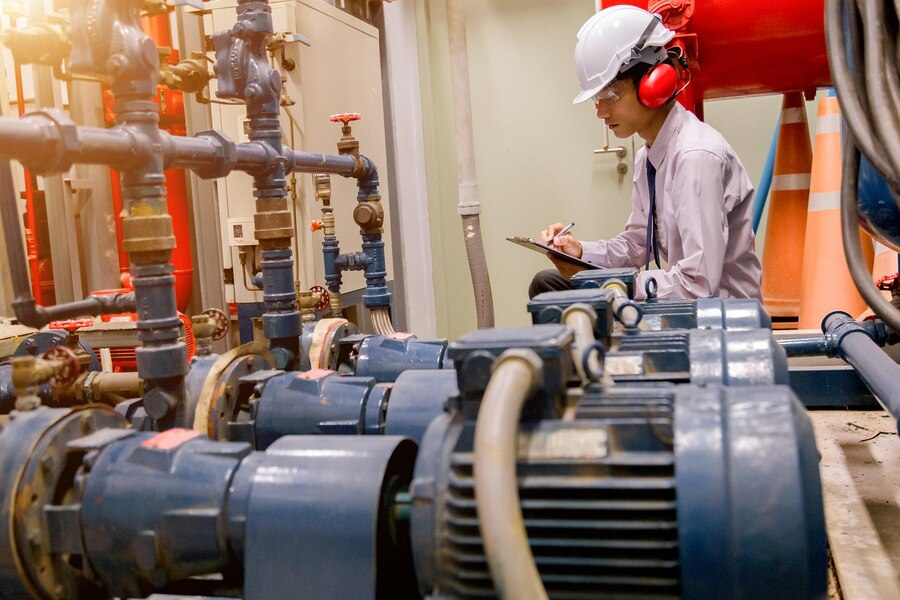In the realm of industrial efficiency, Optimization of Operations, or OPOS, stands at the forefront, heralding a revolutionary transformation in process piping. Through meticulous planning, cutting-edge technology, and streamlined methodologies, OPOS redefines the landscape of operational excellence. This paradigm shift not only enhances productivity but also ensures cost-effectiveness and sustainability. By integrating innovative approaches and leveraging advanced tools, OPOS paves the way for unparalleled efficiency in process piping systems. Join us on a journey where traditional constraints dissolve, replaced by a dynamic era of optimized operations, where OPOS reigns supreme, setting new benchmarks for industry standards.
Understanding the Efficiency Imperative, Optimizing Operations in Process Piping

Efficiency is the lifeblood of any industrial operation, especially in process piping where seamless flow and reliability are paramount. Optimizing operations within process piping systems is not merely a matter of improving productivity; it’s a strategic imperative driven by several factors.
- Maximizing Throughput: Process piping systems are designed to transport materials or fluids from one point to another within industrial facilities. Any inefficiency in this transportation process can lead to bottlenecks, delays, and ultimately, decreased throughput. By optimizing operations, organizations can ensure maximum throughput, enabling them to meet production targets efficiently.
- Minimizing Downtime: Downtime in process piping can have significant repercussions, including production delays, loss of revenue, and potential safety hazards. Optimizing operations involves implementing strategies to minimize downtime, such as proactive maintenance schedules, predictive analytics for equipment health monitoring, and rapid response protocols for addressing issues promptly.
- Enhancing Safety and Compliance: Safety and regulatory compliance are paramount concerns in process piping operations, particularly in industries such as oil and gas, chemical processing, and pharmaceuticals. Efficiency in process piping goes hand in hand with safety and compliance. By optimizing operations, organizations can streamline processes, reduce the likelihood of accidents, and ensure adherence to industry standards and regulations.
- Resource Optimization: Process piping systems consume resources such as energy, water, and raw materials. Optimizing operations involves maximizing resource efficiency through measures such as energy-efficient equipment, water recycling systems, and waste minimization strategies.
- Improving Quality and Consistency: In many industries, the quality and consistency of the final product are directly influenced by the efficiency of process piping operations. Optimizing operations can lead to more precise control over process parameters, reduced variability in product quality, and fewer defects or deviations.
- Harnessing Technological Advancements: The advent of digital technologies such as Internet of Things (IoT), artificial intelligence (AI), and advanced analytics has opened up new possibilities for optimizing process piping operations.
Understanding the efficiency imperative in optimizing operations within process piping systems is essential for achieving sustainable growth, competitiveness, and resilience in today’s industrial landscape. By focusing on maximizing throughput, minimizing downtime, enhancing safety and compliance, optimizing resource utilization, improving quality and consistency, and harnessing technological advancements.
Key Components of OPOS Revolution: Enhancing Performance and Productivity
Advanced Automation and Control Systems

OPOS leverages advanced automation and control systems to optimize the operation of process piping networks. This includes the integration of programmable logic controllers (PLCs), distributed control systems (DCS), and supervisory control and data acquisition (SCADA) systems. These technologies enable real-time monitoring, control, and optimization of process parameters, leading to improved efficiency, reduced downtime, and enhanced reliability.
Smart Sensors and Instrumentation
OPOS relies on smart sensors and instrumentation to gather real-time data on various aspects of process piping operations, including temperature, pressure, flow rates, and chemical composition. These sensors are equipped with wireless connectivity and IoT capabilities, allowing for seamless integration into digital control systems.
Predictive Analytics and Maintenance
Another crucial component of OPOS is the use of predictive analytics and maintenance techniques to anticipate equipment failures and performance degradation. By analyzing historical data and employing machine learning algorithms, organizations can identify patterns, trends, and anomalies that may indicate potential issues.
Modular and Flexible Design
OPOS promotes the adoption of modular and flexible design principles in process piping systems. This involves the use of standardized components, prefabricated modules, and modular construction techniques to enhance scalability, adaptability, and ease of maintenance. Modular design facilitates rapid deployment, reduces construction lead times, and allows for easier reconfiguration or expansion as operational needs evolve.
Digital Twin Technology
OPOS incorporates digital twin technology to create virtual replicas of physical process piping systems. These digital twins enable engineers and operators to simulate, visualize, and analyze the behavior of piping networks in virtual environments. By experimenting with different scenarios and optimizations in the digital realm, organizations .
Continuous Improvement and Optimization
Finally, OPOS emphasizes a culture of continuous improvement and optimization in process piping operations. This involves fostering collaboration, empowering employees, and incentivizing innovation to identify and implement efficiency gains iteratively.
Implementation Strategies, Integrating OPOS into Process Piping Systems

Integrating OPOS (Optimized Process Piping) into existing process piping systems requires a comprehensive approach that addresses technical, organizational, and operational considerations.
Here are key strategies for successful implementation:
- Assessment and Planning: Begin by conducting a thorough assessment of the current process piping infrastructure, including equipment, instrumentation, control systems, and workflows. Identify areas where efficiency gains can be made and prioritize implementation targets based on factors such as criticality, potential impact, and feasibility.
- Stakeholder Engagement: Effective implementation of OPOS requires buy-in and collaboration from various stakeholders, including engineers, operators, maintenance personnel, and management. Engage stakeholders early in the process to solicit input, address concerns, and foster ownership of the initiative.
- Technology Selection and Integration: Select appropriate technologies and solutions that align with the objectives of OPOS implementation. This may include advanced automation systems, smart sensors, predictive analytics software, digital twin platforms, and modular components.
- Pilot Testing and Validation: Before full-scale deployment, conduct pilot tests or proof-of-concept trials to validate the effectiveness of OPOS solutions in real-world operating conditions. Select representative segments of the process piping system for testing and monitor key performance indicators (KPIs) to assess the impact of implemented changes.
- Training and Capacity Building: Provide comprehensive training and capacity building programs to equip personnel with the knowledge and skills required to operate, maintain, and optimize OPOS-enabled process piping systems. Training should cover technical aspects of new technologies, as well as best practices for data interpretation, troubleshooting, and decision-making.
- Continuous Monitoring and Optimization: Implement robust monitoring and performance management mechanisms to track the effectiveness of OPOS solutions over time. Continuously collect and analyze data from sensors, control systems, and other sources to identify opportunities for further optimization and improvement.
- Change Management and Culture Shift: Recognize that implementing OPOS represents a significant change for organizations and individuals involved. Implement change management strategies to proactively address resistance, mitigate risks, and foster a culture of innovation and continuous improvement.
Implementation strategies, organizations can successfully integrate OPOS into their process piping systems, unlocking new levels of efficiency, reliability, and performance optimization. Effective implementation requires careful planning, stakeholder engagement, technology selection, pilot testing, training, continuous monitoring, and change management to ensure a smooth transition and sustainable impact.
Future Directions and Implications, Advancing Process Piping through OPOS Innovation
Integration of Artificial Intelligence and Machine Learning
AI and machine learning technologies will play a pivotal role in advancing OPOS innovation in process piping. These technologies can analyze vast amounts of data generated by sensors and control systems, identify patterns, and predict potential issues or optimization opportunities with greater accuracy.
Expansion of Digital Twin Applications
Digital twin technology will see broader adoption and application in process piping systems. By creating virtual replicas of physical assets and processes, organizations can simulate various operating scenarios, conduct virtual testing, and optimize performance in a risk-free environment.
Enhanced Connectivity and Interoperability
The proliferation of IoT devices, edge computing, and cloud-based platforms will drive greater connectivity and interoperability in process piping systems. Integrated ecosystems of smart sensors, actuators, controllers, and data analytics tools will enable seamless data exchange and collaboration across disparate components and systems. Embrace of Sustainable Practices
OPOS innovation will increasingly focus on sustainability and environmental stewardship in process piping operations. Organizations will adopt eco-friendly materials, energy-efficient equipment, and water-saving technologies to minimize resource consumption and reduce carbon footprint.
Empowerment of Human-Machine Collaboration
OPOS innovation will empower human operators and engineers to collaborate more effectively with intelligent machines and algorithms. Augmented reality (AR), virtual reality (VR), and wearable devices will enable immersive visualization, training, and remote assistance in process piping maintenance and operations.
Shift Towards Modular and Flexible Designs
Modular and flexible design principles will gain traction in process piping systems, enabling rapid deployment, scalability, and adaptability to changing operational requirements.
Cybersecurity and Resilience
With increased connectivity and digitalization, cybersecurity will emerge as a critical concern in OPOS-enabled process piping systems. Organizations will need to implement robust cybersecurity measures to protect against cyber threats, data breaches, d malicious attacks.



